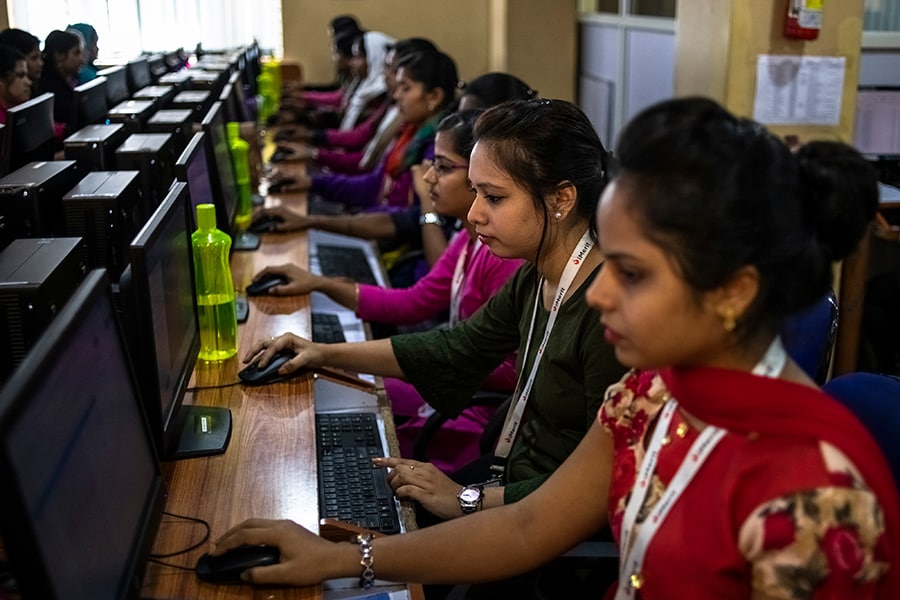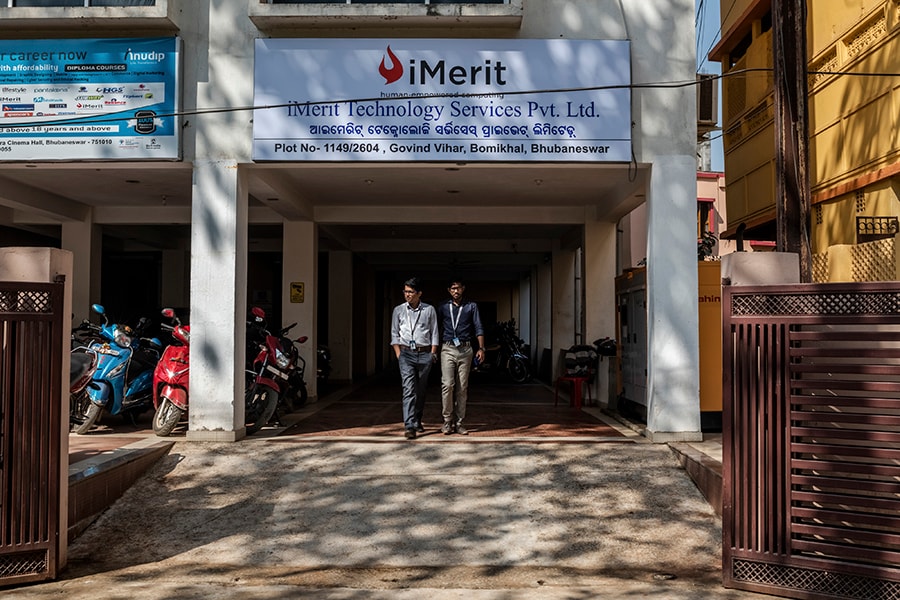
Not machine learning: AI is learning from humans. Many, many humans
Tech executives rarely discuss the labour-intensive process that goes into the creation of AI—in countries such as India, China, Nepal, the Philippines, East Africa and the United States, tens of thousands of office workers are punching a clock while they teach the machines
 Namita Pradhan, second from right, works alongside colleagues at iMerit’s technology center in Bhubaneswar, India, Jan. 31, 2019. Tech executives rarely discuss the labor-intensive process that goes into the creation of artificial intelligence, which is learning from thousands of office workers around the world. (Rebecca Conway/The New York Times).
Namita Pradhan, second from right, works alongside colleagues at iMerit’s technology center in Bhubaneswar, India, Jan. 31, 2019. Tech executives rarely discuss the labor-intensive process that goes into the creation of artificial intelligence, which is learning from thousands of office workers around the world. (Rebecca Conway/The New York Times).BHUBANESWAR, India — Namita Pradhan sat at a desk in downtown Bhubaneswar, India, about 40 miles from the Bay of Bengal, staring at a video recorded in a hospital on the other side of the world.
The video showed the inside of someone’s colon. Pradhan was looking for polyps, small growths in the large intestine that could lead to cancer. When she found one — they look a bit like a slimy, angry pimple — she marked it with her computer mouse and keyboard, drawing a digital circle around the tiny bulge.
She was not trained as a doctor, but she was helping to teach an artificial intelligence system that could eventually do the work of a doctor.
Pradhan was one of dozens of young Indian women and men lined up at desks on the fourth floor of a small office building. They were trained to annotate all kinds of digital images, pinpointing everything from stop signs and pedestrians in street scenes to factories and oil tankers in satellite photos.
AI, most people in the tech industry would tell you, is the future of their industry, and it is improving fast thanks to something called machine learning. But tech executives rarely discuss the labor-intensive process that goes into its creation. AI is learning from humans. Lots and lots of humans.
Before an AI system can learn, someone has to label the data supplied to it. Humans, for example, must pinpoint the polyps. The work is vital to the creation of artificial intelligence like self-driving cars, surveillance systems and automated health care.
©2019 New York Times News Service
 Employees leave the offices of iMerit, a technology services company, in Bhubaneswar, India, Jan. 31, 2019. Tech executives rarely discuss the labor-intensive process that goes into the creation of artificial intelligence, which is learning from thousands of office workers around the world. (Rebecca Conway/The New York Times)
Employees leave the offices of iMerit, a technology services company, in Bhubaneswar, India, Jan. 31, 2019. Tech executives rarely discuss the labor-intensive process that goes into the creation of artificial intelligence, which is learning from thousands of office workers around the world. (Rebecca Conway/The New York Times) Glenda Hernandez works at her desk in the office of iMerit, a technology services company, in New Orleans, May 6, 2019. Tech executives rarely discuss the labor-intensive process that goes into the creation of artificial intelligence, which is learning from thousands of office workers around the world. (Bryan Tarnowski/The New York Times).
Glenda Hernandez works at her desk in the office of iMerit, a technology services company, in New Orleans, May 6, 2019. Tech executives rarely discuss the labor-intensive process that goes into the creation of artificial intelligence, which is learning from thousands of office workers around the world. (Bryan Tarnowski/The New York Times).



